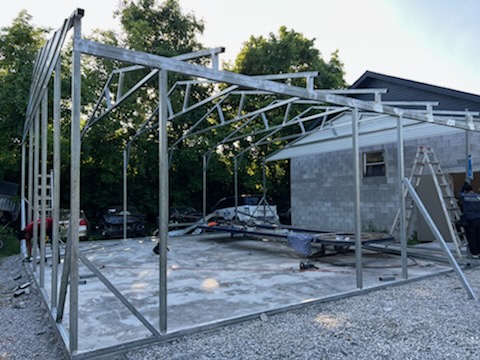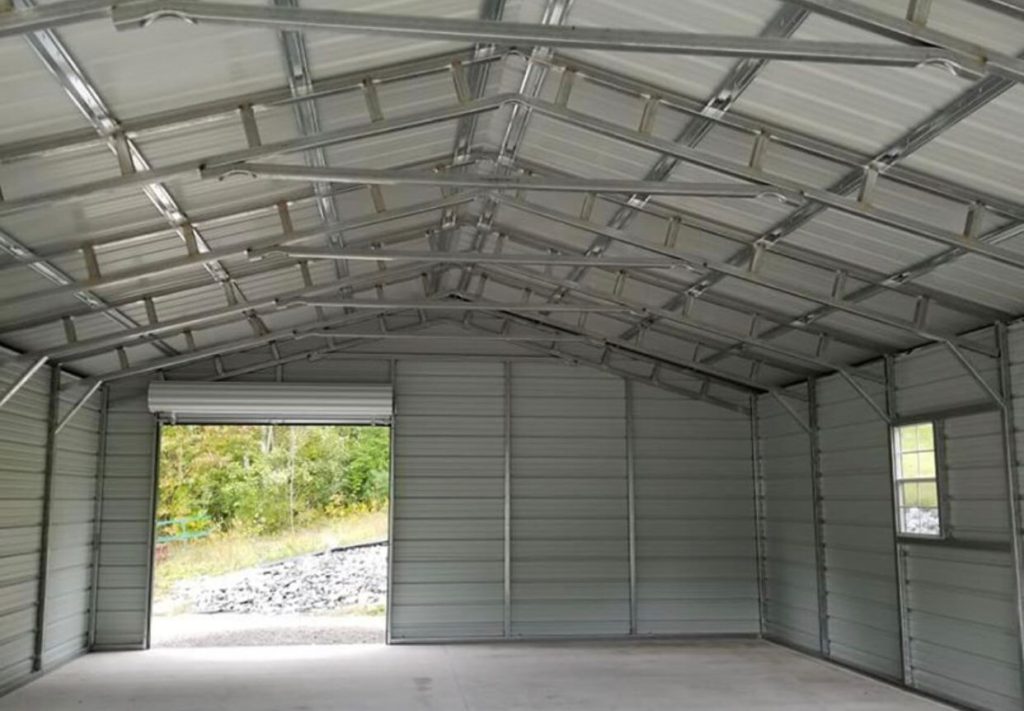The difference between a vertical roof and a standard roof lies in the angle and orientation of the roof panels. A standard roof, also known as a regular roof or a pitched roof, has roof panels that are installed at a slight angle and slope down from the highest point of the roof toward the edges. This design allows water, snow, and other debris to run off the roof and prevents the accumulation of water on the roof, which can lead to leaks and damage.
What is a vertical roof?
On the other hand, a vertical roof has roof panels that are installed vertically, with the top edge of the panels being parallel to the ground. This design allows water, snow, and other debris to easily slide off the roof and away from the building, preventing the accumulation of water on the roof. The vertical orientation of the roof panels also allows the roof to be more durable and able to withstand high winds and heavy snowfall.
Advantages of a vertical roof
One of the key advantages of a vertical roof is its ability to provide better protection for the building and its contents. The vertical orientation of the roof panels allows water, snow, and other debris to easily slide off the roof, preventing the accumulation of water on the roof and minimizing the risk of leaks and damage. This is particularly important in areas that experience heavy rainfall or snowfall, as the vertical roof design can help to prevent water from entering the building.
In addition to providing better protection for the building, a vertical roof can also improve the appearance of the building. The vertical orientation of the roof panels creates a clean and modern look, which can enhance the overall aesthetic of the building. This is especially true when the roof panels are made from metal, which can be customized with different colors and finishes to match the style of the building.
Another advantage of a vertical roof is its versatility. A vertical roof can be used on a variety of building types, including residential homes, commercial buildings, garages, sheds, and carports. This versatility makes it a popular choice among homeowners and businesses alike.

Discover: Do Metal Roofs Make a House Hotter?
In terms of cost, a vertical roof is typically more expensive than a standard roof. This is because the vertical orientation of the roof panels requires more material and labor to install, which can drive up the cost of the roof. However, the added protection and durability provided by a vertical roof can make it a worthwhile investment, especially in areas that experience harsh weather conditions.
Overall, the difference between a vertical roof and a standard roof lies in the orientation and angle of the roof panels. A standard roof has roof panels that are installed at a slight angle, while a vertical roof has roof panels that are installed vertically. The vertical orientation of the roof panels on a vertical roof provides better protection for the building and its contents, and can also improve the appearance of the building. While a vertical roof may be more
expensive than a standard roof, it can provide added protection and durability that can make it a worthwhile investment.

